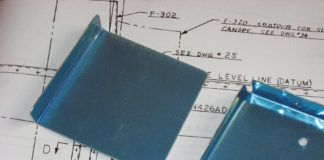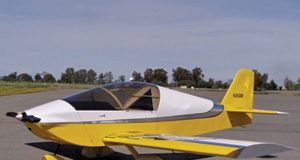Rarely in my engineering career have things worked exactly as originally designed. There is almost always a little tweak here or a component nudge there that makes the design work a little better. This one hasn’t had a change from the first time I put pencil to paper. Unusual.
I will give budding writers a bit of advice: If you are going to do a series on solar chargers, do it in the summertime when you can depend on sunshine. If you do it during the winter (next week is Christmas as I am writing this) you will miss your deadline and your editor will not be a happy camper. However, a weeks reprieve allowed me to get reliable data on this device.
And reliable it is. Fortunately, I got to take the data very close to the winter solstice, so your results should only be getting better from mine. Back in the February issue (written in October) I measured the solar panel at high noon on a sort of half-sun, half-wispy-clouds day and came to the observation that we could get about 35 mA out of our little Harbor Freight 1.5-watt solar panel. Today, in full winter sun (crystal blue sky), I got exactly that same amount of current into a lead-acid RG type battery.
The solar cell began pumping current into the battery at about 10 a.m., and at 4 p.m. the little charge light had gone off, indicating that the solar cell wasn’t putting out enough power to give the battery any more juice. But in those 6 hours we put about a tenth an amp-hour into the battery. While that may not seem like a lot into a 35-amp-hour battery, I can guarantee you that it is more than enough to keep your battery “topped off” in the winter when most of us slow down our flying activities.
Not only that, but as you may recall, recombinant gas batteries like to be brought to full charge (13.4 volts) and then be allowed to discharge to 12.8 volts or so. This little rascal brings your battery up to precisely 13.4 volts (adjustable with R121) and then lets it trickle down to 12.8 volts (adjustable with R120) before starting the charge cycle once more. A thorough test of this system shows that in the winter, this cycle can take up to two weeks (or more in a long spell of really nasty weather) and in summer my best engineering estimate (wag1) is that the time will shorten to about four or five days.
I used the old freezer and oven-with-the-door-open trick to see if the little 3-diode temperature compensation scheme was working properly, and I can report that the output voltage tracked the curve of battery voltage versus temperature curve to within experimental error. Again, this rarely happens in engineering; this design is as near to theoretically perfect as Ive ever done. Scary.
The Art of the Rats Nest
If you will recall last month, I showed you a “rats nest” layout of the PC Board. This month you get the artwork for what a professional PC board layout looks like when it comes from that rats nest. It wasn’t too difficult to produce that artwork; it took me about 8 hours to do the parts placement and then about 2 more hours to do what the computer failed to do on its own layout “autoroute” routine.
Rather than go on and on about how well this months device worked, Id like to take the time to give you a shopping list so that you can go buy the parts and build this charger. Im not going to give you a list for the common items such as resistors, capacitors and the like, but I will give you sources for the size- and function-critical items.
I may regret making this offer, but I think so much of this design that Im going to take a chance. I just added up the price of all the parts in the list (at my wholesale cost) in quantities of 10 each. It comes to just shy of $23. Im going to have to pay my kitter about $2 apiece to put these parts in bags, and it will cost me $5 to send them to you (U.S. addresses only), so my out-the-door cost is $30. Heres the offer: You email me ([email protected]) with a firm commitment for $30 worth of these parts, and you’ve got a deal.
Remember, you have to come up with the Harbor Freight or other low-power solar panel, the IC, the transistors, the diodes, the resistors, the capacitors and the wire yourself. This deal is conditioned on me getting at least 10 takers by the middle of June and, sorry, but its for U.S. addresses only. If not, the whole deal is off. Ill contact you regarding payment (probably by PayPal) sometime after we know whether the deal is a go.
If you prefer, you can email me (same address), and Ill send you the Gerbers and the NC drill data for you to make your own PC board. If you don’t know what Gerbers and NC drill data are, you wont know how to make the board either.
Whoosh! This one sort of drained me. It took forever to take the data, take it again, correlate it and then cross-correlate it to make sure I wasn’t giving you bogus information or designs. Next Im going to do a couple of fairly non-technical articles and then the mother of all solar articles, the one on the 100-watt solar panels and the hangar kilowatt 110-volt supply. But as I said in the introduction, Im waiting for late spring or summer to do that one. Stay tuned.













